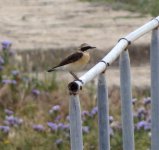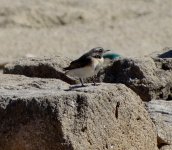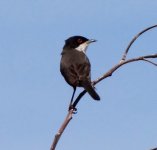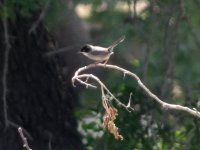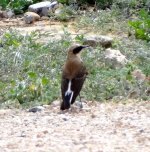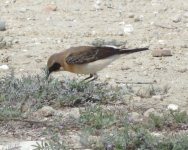KenM
Well-known member
For the first two images, I'm unsure of the age of these Black-eared Wheatears, noting that Image 1. appears to be showing white tips to the tail?
With the last two images showing Sardinian Warbler..clearly melanocephala in the first Image and what appears to be a very pale (even allowing for the bright light) individual, or could it be of the race momus? Cheers
With the last two images showing Sardinian Warbler..clearly melanocephala in the first Image and what appears to be a very pale (even allowing for the bright light) individual, or could it be of the race momus? Cheers




